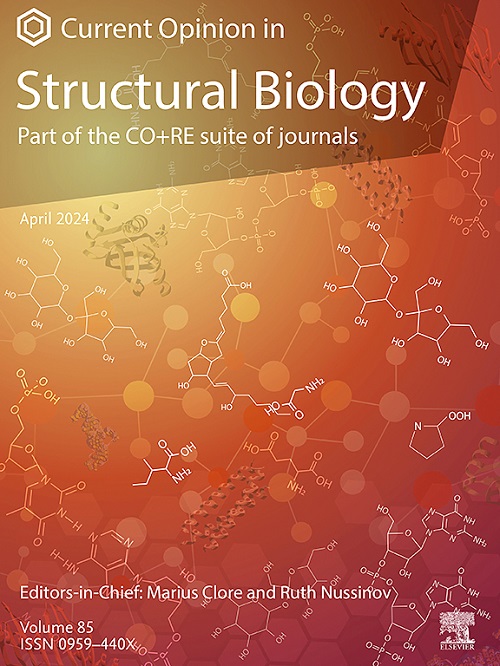Innovative strategies for modeling peptide–protein interactions and rational peptide drug design
IF 6.1
2区 生物学
Q1 BIOCHEMISTRY & MOLECULAR BIOLOGY
引用次数: 0
Abstract
This review highlights cutting-edge techniques for modeling peptide–protein interactions and advancing computer-aided peptide–drug design. We examine significant progress in generating peptide poses through docking and artificial intelligence (AI), assessing peptide flexibility via enhanced molecular dynamics simulations, and analyzing binding interactions through free energy calculations. Additionally, we discuss how these insights can inform the rational design of therapeutic peptides by utilizing free energy metrics and strategic modifications to enhance their binding affinity and therapeutic potential. Looking forward, further integrating AI will be crucial for optimizing peptide design and enhancing drug development efforts.
多肽-蛋白相互作用建模和合理多肽药物设计的创新策略
本文综述了模拟肽-蛋白相互作用和推进计算机辅助肽药物设计的前沿技术。我们研究了通过对接和人工智能(AI)生成肽位姿的重大进展,通过增强的分子动力学模拟评估肽的灵活性,并通过自由能计算分析结合相互作用。此外,我们还讨论了这些见解如何通过利用自由能指标和战略性修改来增强其结合亲和力和治疗潜力,从而为合理设计治疗肽提供信息。展望未来,进一步整合人工智能将对优化肽设计和加强药物开发工作至关重要。
本文章由计算机程序翻译,如有差异,请以英文原文为准。
求助全文
约1分钟内获得全文
求助全文
来源期刊

Current opinion in structural biology
生物-生化与分子生物学
CiteScore
12.20
自引率
2.90%
发文量
179
审稿时长
6-12 weeks
期刊介绍:
Current Opinion in Structural Biology (COSB) aims to stimulate scientifically grounded, interdisciplinary, multi-scale debate and exchange of ideas. It contains polished, concise and timely reviews and opinions, with particular emphasis on those articles published in the past two years. In addition to describing recent trends, the authors are encouraged to give their subjective opinion of the topics discussed.
In COSB, we help the reader by providing in a systematic manner:
1. The views of experts on current advances in their field in a clear and readable form.
2. Evaluations of the most interesting papers, annotated by experts, from the great wealth of original publications.
[...]
The subject of Structural Biology is divided into twelve themed sections, each of which is reviewed once a year. Each issue contains two sections, and the amount of space devoted to each section is related to its importance.
-Folding and Binding-
Nucleic acids and their protein complexes-
Macromolecular Machines-
Theory and Simulation-
Sequences and Topology-
New constructs and expression of proteins-
Membranes-
Engineering and Design-
Carbohydrate-protein interactions and glycosylation-
Biophysical and molecular biological methods-
Multi-protein assemblies in signalling-
Catalysis and Regulation
 求助内容:
求助内容: 应助结果提醒方式:
应助结果提醒方式:


